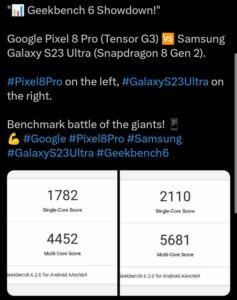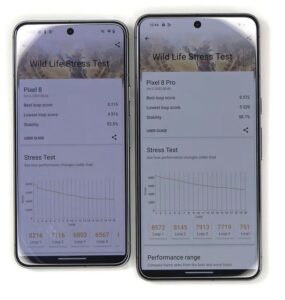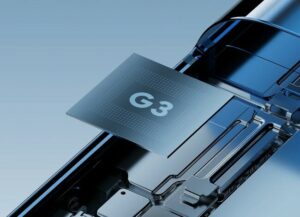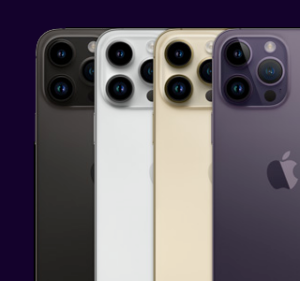After a lot of hype and leaks, the long-awaited Google Pixel 8 series is finally here. Both the Pixel 8 and Pixel 8 Pro come with some nice hardware and software improvements, but there are certain factors that are causing some doubts among potential buyers.
One of those factors is the price, as the Pixel phone lineup was known for its competitive pricing compared to other major brands. This seems to be true for the new vanilla model, but the Pixel 8 Pro now starts at nearly $1,000, altering its position in the market. Adding fuel to fire, it seems that the trade-in values for old Pixel phones is also leaving some fans disappointing.
Google Pixel 8 Pro feels overpriced for some due to hardware compromises
Since the Pixel 6 series arrival, Google has been using their own Tensor chipsets instead of the highly rated Qualcomm chipsets they used before.
Their latest Pixel 8 series integrates the Tensor G3 chip with improvements in power and (above all) AI processing capacity.
Tensor G3 chipset still behind the competition
Until now, Tensor chipsets have lagged behind Qualcomm alternatives in terms of power and energy efficiency. However, fans have accepted this ‘compromise’ thanks to the Pixel phones’ competitive prices, plus long-term support and the almost-stock Android experience. Also, camera experience has been among the best in the industry, offering excellent results in virtually any situation.
Curiously, the last time Google used Qualcomm chipsets (2020) they already ‘experimented’ using less powerful hardware compared to the high-end of the time. They did it with the Google Pixel 5 and its Qualcomm Snapdragon 765G chipset (very popular in ‘premium mid-range’ devices) at a price of $699. Was this a test to see if users would accept less powerful hardware to maintain competitive prices? Only Google knows.
The following year (2021), Google launched the Pixel 6 and Pro, offering the vanilla version for a very attractive price of $599 (mid-range level), and setting $899 as the price for their ‘Pro’ models. These same prices were maintained for the Google Pixel 7 and 7 Pro (2022), but now the situation has changed in the latest generation. Google raised the price of the Pixel 8 ($699) and 8 Pro ($999) by $100.
Tensor G3 tests and benchmarks
While the vanilla model seems to maintain a good value for money, the ‘Pro’ model practically reaches the $1,000 ‘psychological barrier’. This puts the Google Pixel 8 Pro in the same price range as the iPhone 15 Pro, and this is where the perception of the device changes completely.
Some potential buyers do not see the new price justified since the device still maintains certain hardware compromises that are not present in other similarly-priced phones. The ‘compromise’ that stands out the most is the Tensor G3 chipset which, according to benchmarks, is still not up to par with the current high-end mobile chipsets from Qualcomm or MediaTek.

According to Geekbench 6 results, the Tensor G3 chipset has a similar power to that of the Qualcomm Snapdragon 8+ Gen 1. Although this is quite powerful, it should be noted that Qualcomm hardware was launched almost 1 and a half years ago. Additionally, Qualcomm’s current flagship chipset is the Snapdragon 8 Gen 2, and the Snapdragon 8 Gen 3 will arrive this month.
In other words, the Tensor G3 chipset will be up to 2 generations behind the competition in terms of power, yet the Pixel 8 Pro’s price is comparable to that of much more powerful devices. That said, that’s not all that worries users regarding the Tensor G3, but also its energy efficiency or potential overheating, two aspects that have been problematic in the previous two Tensor chips.

Sadly, early tests suggest that the hardware still suffers from overheating, which is noticeable in its Wild Life Stress Test (from 3DMark benchmark) results. Pixel 8 Pro stability result was 58.7%, which means that it had to perform thermal throttling (lowering the frequency of the CPU and GPU due to high temperature) shortly after starting to execute demanding tasks.
Other hardware compromises or omissions
The chipset isn’t the only hardware compromise on the Pixel 8 Pro when compared to other similarly-priced phones. There are other notable absences such as UFS 4.0 storage, one of the fastest and most efficient storage formats, maintaining the UFS 3.1 standard. While UFS 3.1 is pretty fast, a $1,000 phone should raise the bar for choosing hardware components.
Another disappointing point is that this year’s Pixel Pro starts at just 128 GB of storage, which seems out of place on a $1,000 phone. If you want more capacity, you will have to pay $1,059 for the 256 GB version, $1,119 for the 512 GB version or $1,219 for the 1 TB version.
Regarding biometric security, the Pixel 8 series brings good and bad news. On the bright side, the face unlock system is now Class 3, which means it is reliable enough to be used in payments and banking apps. But, the fingerprint reader uses the classic optical technology instead of the more modern and faster ultrasonic one.
Also, concerns about possible overheating could be mitigated if the company had implemented an advanced cooling system (such as one based on a vapor chamber). However, although several other Android brands have done it even on mid-range devices, such technology is not present in the latest Pixel phones.
Curiously, although the camera system does not include the most modern and large sensors, this does not worry users much. This is thanks to Google’s powerful image processing technology that has been proven to get the maximum potential out of each camera on the device. But, not every problem can be compensated by software, and hence the concerns about the missing features mentioned above.
Disappointing trade-in values for older Pixel phones
Another issue that is disappointing numerous fans is the poor trade-in values they are getting for previous Pixel phones when trying to buy a Pixel 8 series device. For example, to purchase a Pixel 8 Pro, Google reportedly offers $420 credit for a Pixel 7 Pro, or $325 for a Pixel 7. On the other hand, to purchase a Pixel 8 via trade-in, they offer $385 credit for a Pixel 7 Pro, or $325 for a Pixel 7.
That said, it seems that trade-in values can vary significantly between stores and devices. For instance, a user reports that the Pixel 7 series Best Buy trade-in values are $125 higher than those mentioned above. Meanwhile, another user reports that the Pixel 6 Pro trade-in values are higher in the Google Store than in Best Buy. So, if you want to get the best value possible, you will have to check on multiple stores.
Google allegedly ‘tempting’ iOS users with much higher trade-in values makes Pixel fans upset
However, one of the things that is bothering potential buyers the most is that iPhone devices have a noticeably higher trade-in value than Pixel phones. While this seems logical since iPhone prices depreciate at a slower rate, Pixel fans hoped that their brand loyalty would have a better reward.
For example, a user points out that the iPhone 13 Pro trade-in value at Best Buy to buy a Pixel 8 series phone is $920. Some suggest that it is a strategy to ‘tempt’ some iOS users to switch to the Google Pixel ecosystem, but it is still disappointing for current fans.
The situation has led some to consider waiting for Black Friday sales, but seeing as how Google Fi users are already getting good deals (like a $400 preorder discount in addition to their phone trade-in value), it doesn’t seem like Google is going to offer better deals than that soon. Meanwhile, others are considering waiting for the Galaxy S24 series launch to get trade-in value for their Pixel devices and switching brands.
That said, there are people who suggest waiting to purchase a new Pixel 8 series devices, since Google has a history of offering aggressive discounts a few months after the initial launch. However, with this alternative you will lose pre-order offers like the Pixel Watch 2 or Buds Pro, gadgets that you could sell to recover some money.
Conclusion
Pixel 8 series price is causing doubts even among die-hard fans of the brand, especially when we talk about the Pixel 8 Pro. Touching the $1,000 ‘psychological barrier’ makes people judge the device differently and be more demanding, so certain hardware compromises look worse than before.
In a $1,000 phone, users expect products that offer the best hardware currently available. However, the Pixel 8 Pro chipset, storage format, just 128 GB in the base version, optical fingerprint reader, potential overheating issues and the lack of an advanced cooling system seem ‘inexcusable’ to some.
On the other hand, previous Pixel phones trade-in values to obtain a new Pixel 8 series devices seem notably low, a feeling that worsens when seeing that iPhone devices have a trade-in value up to twice as high, which seems like a strategy to tempt iOS users, but it does not compensate enough for current Pixel phones fans.
PiunikaWeb started as purely an investigative tech journalism website with main focus on ‘breaking’ or ‘exclusive’ news. In no time, our stories got picked up by the likes of Forbes, Foxnews, Gizmodo, TechCrunch, Engadget, The Verge, Macrumors, and many others. Want to know more about us? Head here.




